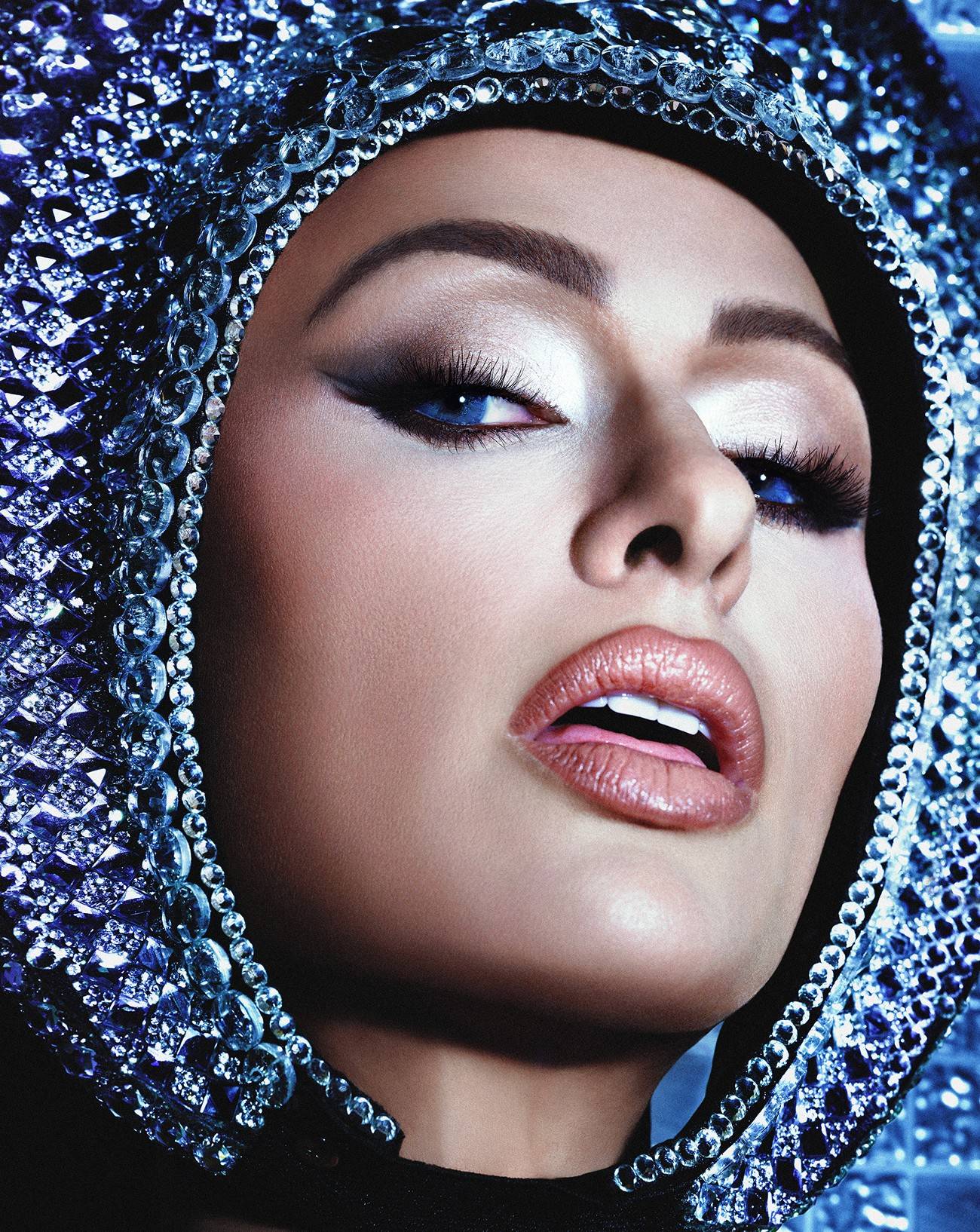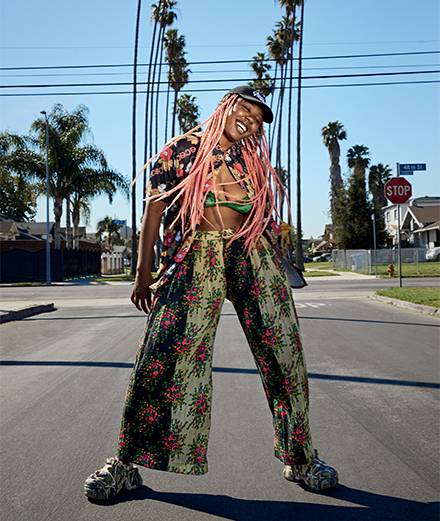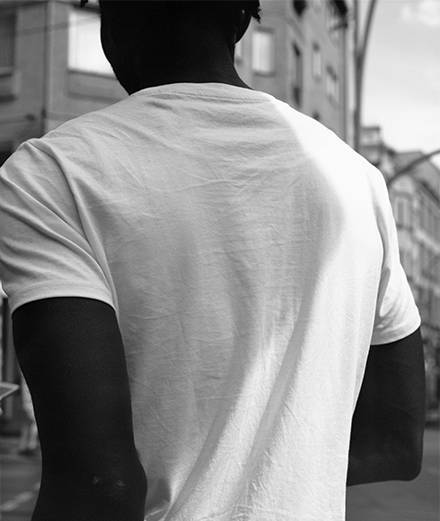An obsession with beauty and the penis (erect or otherwise, there’s something for everyone), the cult of the body and arses penetrated with various objects (once again catering for all tastes), the quest for perfection of form and S&M fetishism, the rigour of black and white compositions and celebrity portraits, his relationship with Patti Smith and the homosexual lovers… From his very first photographs taken in the 1970s to now – his death in 1989 didn't change much – so many things have been said, written and shown of Robert Mapplethorpe’s oeuvre and life. As rigorous as he was scandalous, the American photographer has with time become a veritable icon of 20th century photography. His iconic photo “Man in Polyester Suit”, with a penis emerging from the open zipper, was sold in 2015 at auction for 420,000 euros. The previous year, France consecrated him officially at the Grand Palais with a retrospective (which was disappointingly backward looking) while the Musée Rodin compared him (rather brilliantly) with the eponymous sculptor. And 2016 will be his year of beatification in the USA with a double show at the LACMA and the Getty Museum in Los Angeles.
“It’s precisely not the museum-version of Robert Mapplethorpe that interests me,” exclaims Peter Marino when asked about the exhibition he’s been invited to curate by gallery owner Thaddaeus Ropac. The illustrious luxury architect-slash-decorator delivers his vision of the photographer in the heart of the Marais until March 5th. The leather-clad Marino is a passionate art collector and is the proud owner of more than a 100 works by Mapplethorpe.
Numéro met up with him.
uméro: Why agree to curate a Mapplethorpe exhibition after the Grand Palais retrospective of 2014? Hadn’t everything had already been said?
Peter Marino: I wouldn’t dream of being provocative but I just wasn’t very satisfied after the Grand Palais exhibition. The numerous portraits didn’t fly over my head and neither did the twenty-odd flower images. I just don’t really consider these as his most interesting work. But when it came to the theme of sexuality… those photos were hidden in the smallest part of the show whose entrance was marked with a warning! I thought the French were more open minded than that! There were barely 4 or 5 penises on display… How can you claim to have a Robert Mapplethorpe retrospective without focusing on such important elements of his oeuvre? The male nudes and his images of a sexual nature are major pieces.
For the exhibition at the Thaddaeus Ropac Gallery you decided to focus on the “X”, “Y”, and “Z” portfolios. What are they about?
I wanted to revisit the themes that I believed were fundamental, themes that gave rise to three famous portfolios published between 1978 and 1981: “X” for the photographs of sex, “Y” for the floral still lifes and “Z” for the male nudes. I chose some sixty photographs, some of which come from collections at the Guggenheim, LACMA and the Getty Museum. The scenography of the exhibition is done in such a way that each wall welcomes a selection of twenty photographs from each portfolio. One wall is painted in black, one in grey and the last in a dark brown. These are the colours Robert Mapplethorpe originally chose for each of his portfolios. To me, these dark backgrounds, the sobriety, and the rigour of the ensemble set off the photographs perfectly. I wanted visitors to concentrate more on the work of the artist than my mise en scène.
Violence, sexuality, religion, homosexuality… Robert Mapplethorpe photographed subjects that are as sensitive today still. But is his oeuvre as scandalous and provocative as it was in the 1970s and 80s?
It’s funny because I noticed how reactions seem to be stronger today, almost as if the public was more “old fashioned” than it was in the 1970s. In theory our societies are less conservative and yet… But if the reception to Mapplethorpe’s work has changed, it’s also because the audience has changed too. In the 1970s there were only a hundred or so people collecting him, a small circle of fairly underground connoisseurs. These days Mapplethorpe is collected all over the world and he gets shown in the biggest museums. An audience that’s much larger, and much less informed, is confronted with his photographs. The more mainstream you become the more you’re confronted with hostile and conservative reactions. We’ll soon be able to witness the attitude of puritanical America when the exhibition moves to Lost Angeles…
So nothing ever shocks you, or makes you feel uncomfortable in the work of Mapplethorpe?
No, absolutely not (laughs). Obviously certain photographs provoke a reaction in me. Like “Woah!! Is he really sticking that up his arse?” But I don’t think that Robert Mapplethorpe’s intention was to shock. He just wanted to express his feelings, reveal his sexuality. Obviously this type of approach has the power to make you think about your own sexuality
Is his work only a sublime incarnation of an era – the 1970s and 1980s? Or is it still in tune with our times?
His work echoes, amongst other things, the sexual revolution of the 1970s, but its sincerity renders it eternal. When you look at one of his photographs, you become connected to the subject – whether it’s a dog or a nude body. You’re invaded by the deepest of emotions. And these human feelings are immutable. Robert Mapplethorpe allows us to touch the truth of human beings, things and the world. His work speaks to our humanity, our capacity to perceive and to feel beauty.
Why did you decide to show 17 Polaroids as a prelude to your selection from the “X”, “Y” and “Z” portfolios?
This ensemble is incredibly important to me. When I was given access to the archives of the Mapplethorpe Foundation to prepare the exhibition, I became fascinated by the formal experiments in which he was engaged. This selection of Polaroids expresses this to perfection. They’re works from the 1970s when Mapplethorpe was still a young man. In them we see two aspects of his art that would be fully expressed later on. On one side there’s the sexuality and on the other total abstraction — with these white walls traversed by two black lines. It reflects both the spirit of the times shaped by the opposing abstract expressionism of a Rothko or a de Kooning and the more realistic pop art of Warhol, as well as the battle that rages in the mind of every artist between abstract thoughts and the will to embody them intelligibly. Looking at these Polaroids you witness this conflict, this game of back and forth between realism and abstraction that led to a sublime synthesis over the following years. Those embodied in the “X”, “Y” and “Z” portfolios.
“XYZ, Robert Mapplethorpe curated by Peter Marino”, Galerie Thaddaeus Ropac, 7, rue Debelleyme, Paris 3rd. Until March 5th. www.ropac.net





















